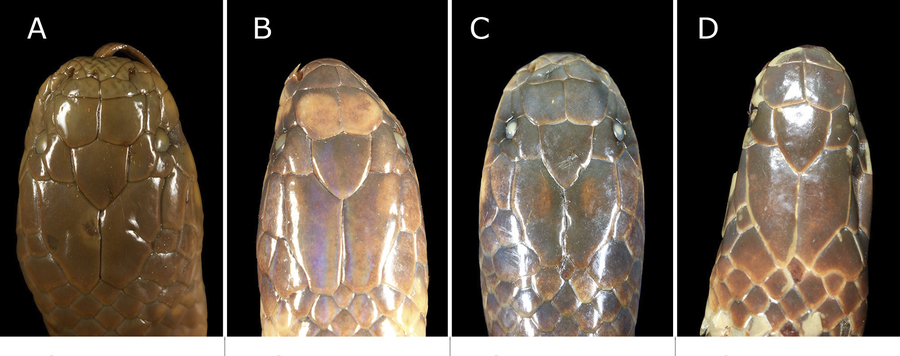
Hidden diversity in semi-fossorial Melanesian forest snakes: A revision of the Toxicocalamus loriae complex (Squamata, Elapidae) from New Guinea
With its conservative set of scalation characters, Toxicocalamus loriae is a morphologically confusing species to which a wide array of phenotypes has been assigned. Careful analysis of 224 museum specimens reveals that multiple distinct species remain hidden under the name T. loriae and that diagnostic, species-level differences are more nuanced in this group of snakes than among other members of the genus. Our taxonomic reassessment leads us to resurrect the species T. lamingtoni comb. nov., T. loennbergii comb. nov., and T. nymani comb. nov. from synonymy with T. loriae, retain only T. pratti as a synonym, and describe three new species. As a consequence, T. loriae is no longer recognized as ranging throughout the entire island of New Guinea but is instead restricted to the southern versant of the Papuan Peninsula, and T. lamingtoni and T. spilorhynchus sp. nov. are species restricted to that same peninsula’s northern versant. Toxicocalamus loennbergii is known only from the type series taken on the Onin Peninsula in West Papua, Indonesia, Toxicocalamus atratus sp. nov. is a high-elevation (800–2200 m) Central Highlands endemic, and T. vertebralis sp. nov. ranges from the Central Highlands of Papua New Guinea eastward into the Wau area of Morobe Province. Toxicocalamus nymani inhabits a geologically more heterogenous region, occurring from the Central Highlands eastward to the Huon Peninsula, including Karkar Island, and adjacent areas of Madang Province as well as the northernmost reaches of the Papuan Peninsula. We expect that denser geographic sampling across New Guinea and focussed specimen collection of a few known populations will result in the recognition of additional species in this complex.






